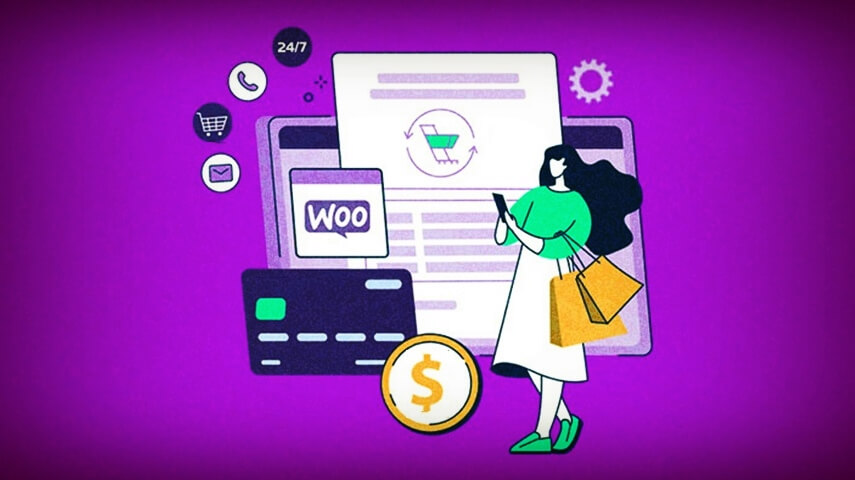One key performance indicator that is frequently used to gauge success in the dynamic world of e-commerce is conversion rate. The art and science of converting website visits into paying customers is known as Conversion Rate Optimization (CRO), and it is essential to the expansion and success of internet enterprises. We will explore the fundamental ideas of CRO in this extensive tutorial and show you practical tips to increase the conversion rates of your online store.
Understanding Conversion Rate Optimization
What is Conversion Rate?
Conversion rate is the percentage of website visitors who take a desired action, such as making a purchase, signing up for a newsletter, or filling out a contact form. In e-commerce, the primary focus is on the conversion of visitors into paying customers.
What is Conversion Rate Optimization (CRO)?
CRO is the process of refining and improving your website and marketing strategies to increase the likelihood of visitors completing the desired actions. It involves a deep understanding of consumer behavior and a data-driven approach to make informed changes.
Setting Clear Goals
Before embarking on your CRO journey, it’s essential to establish clear and measurable goals. Your objectives may include increasing sales, growing your email subscriber list, or enhancing user engagement. These goals will serve as the foundation for your CRO strategy.
Analyzing Your Current Performance
To know where you’re going, you must understand where you currently stand. Analyze your website’s current performance by examining metrics such as bounce rate, average session duration, and conversion rate. Tools like Google Analytics can provide invaluable insights.
User Experience (UX) and Design
A well-designed website with excellent user experience can significantly impact your conversion rates. Here are some key elements to consider:
- Responsive Design: Ensure your website is mobile-friendly, as an increasing number of users shop on mobile devices.
- Page Speed: Faster loading times reduce bounce rates and improve user satisfaction.
- Navigation: Simplify the navigation structure to help users find what they’re looking for quickly.
- Visual Appeal: Use high-quality images and a clean design to make a positive first impression.
Optimizing Product Pages
Product pages are where the magic happens. Optimize them to entice visitors into making a purchase:
- High-Quality Images: Use multiple images from different angles to showcase the product.
- Detailed Descriptions: Provide comprehensive information about the product’s features and benefits.
- Customer Reviews: Display user-generated reviews to build trust and credibility.
- Clear Call to Action: Make it easy for visitors to add items to their cart.
The Checkout Process
The checkout process is a critical stage where many potential customers drop off. Streamline it by:
- Guest Checkout: Offer the option to check out as a guest without requiring registration.
- Progress Indicators: Clearly show how many steps are left in the checkout process.
- Multiple Payment Options: Accept a variety of payment methods to accommodate customer preferences.
Effective Call to Actions (CTAs)
Your CTAs guide users toward the desired action. Optimize them by:
- Using Action-Oriented Language: Use words like “Buy Now” or “Get Started” to prompt action.
- Contrasting Colors: Make your CTA buttons stand out from the rest of the page.
- Placement: Position CTAs prominently, especially on product pages and in the checkout process.
A/B Testing
A/B testing involves creating two or more versions of a webpage with minor differences and comparing their performance. This data-driven approach helps identify which changes lead to higher conversions.
Leveraging Social Proof
People tend to follow the crowd. Use social proof to build trust and influence potential customers:
- Product Ratings and Reviews: Encourage customers to leave reviews and prominently display them.
- Testimonials: Share positive feedback and endorsements from satisfied customers.
- Counters and Notifications: Show the number of products sold or the number of visitors currently on your site.
Mobile Optimization
Mobile commerce is on the rise, and a mobile-optimized site is essential for CRO. Pay attention to:
- Mobile-Responsive Design: Ensure your site adapts seamlessly to various screen sizes.
- Mobile-First Indexing: Optimize your site’s content for mobile search results.
- App Development: Consider developing a mobile app for a more immersive user experience.
Performance Monitoring and Data Analysis
CRO is an ongoing process. Regularly monitor your website’s performance and analyze user behavior. Use tools like heatmaps, session recordings, and Google Analytics to gather data and make informed improvements.
The Future of CRO
As technology and user behaviors evolve, so does CRO. Keep an eye on emerging trends and technologies, such as artificial intelligence, chatbots, and personalization, to stay ahead in the e-commerce game.
Conclusion
Conversion Rate Optimization is a never-ending journey of refinement and improvement. By understanding your audience, setting clear goals, and using data-driven strategies, you can significantly boost your e-commerce conversion rates. Remember that CRO is not a one-size-fits-all solution; what works for one business may not work for another. Continuously adapt and innovate to provide the best possible experience for your visitors, and in return, watch your conversion rates soar.




